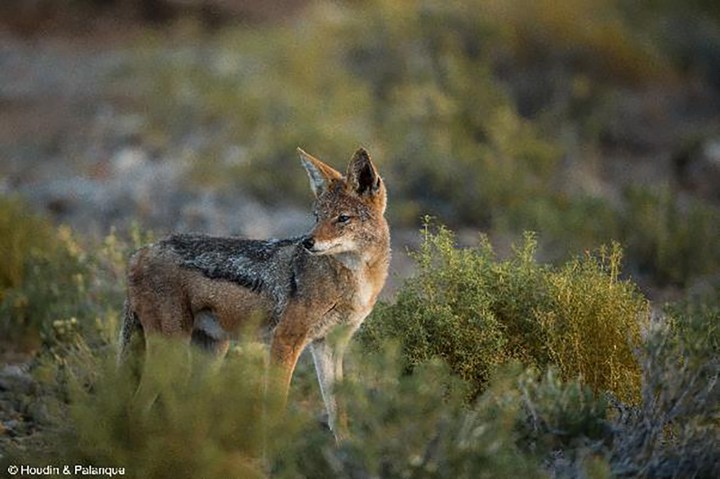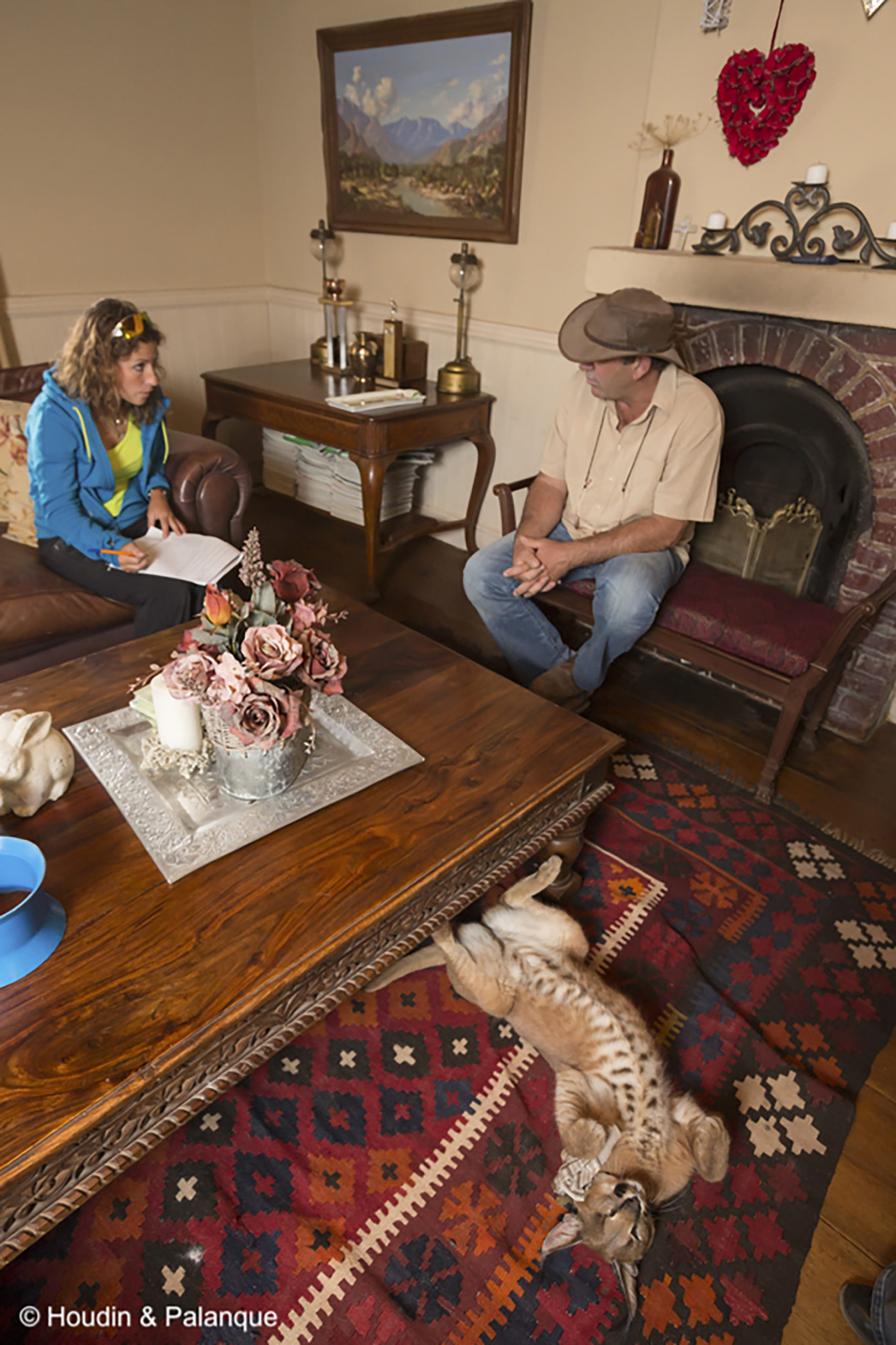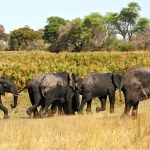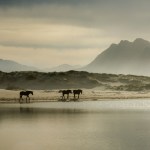PREDATORS VS PEOPLE
I hate you, but you’re beautiful: The complex connection between jackals and Karoo farmers

Livestock predation by black-backed jackals has increased in the Karoo since government support for the persecution of these predators declined in the 1990s. Although farmers have been perceived as hating these predators, some admire their cunning and beauty and are moving towards using non-lethal methods of predation management.
Livestock predation has been a problem in Africa for centuries, and predators have been persecuted in response. When colonists arrived in Africa and started rearing livestock, they gradually diversified their arsenal of approaches, augmenting the existing war that was waged against predators by existing herders, such as the Khoikhoi, who were dressed in jackal pelts when the Dutch bought sheep from them in the 1650s.
Consecutive colonial Cape governments offered bounties for predators until the 1950s, with the government shifting to supporting the rearing of hunting dogs and subsidising hunting clubs to shoot, trap and poison predators until the early 1990s.

Marine Drouilly, then a PhD student at the Institute for Communities and Wildlife in Africa, interviews Wallie, a Beaufort West farmer, about his relationship with jackal and caracal, while his tame caracal, Noodle, rolls on the floor. (Photo: Nathalie Houdin and Denis Palanque)
According to Dr Marine Drouilly, who conducted research on black-backed jackals and caracals in the Central Karoo for her PhD at the University of Cape Town, farmers in the Karoo claim that black-backed jackal numbers have increased since the 1990s because of the decline in government support for their persecution. Drouilly, who is now a regional carnivore monitoring coordinator for Panthera, the global wild cat conservation organisation, says that changes in the rural landscape have also contributed to increased numbers of black-backed jackals.
There are now fewer farmers, larger properties, more game farms and protected areas, fewer sheep and fewer people living on the land than there were in the first half of the 20th century. So, despite the continued persecution of black-backed jackals, they continue to persist on farmland.
Drouilly notes that “black-backed jackals are common on farmland in the Central Karoo, although they are very hard to see because they are secretive and wary of humans”.
These animals have every reason to be wary of people. Their predation of livestock has resulted in an arms race, with farmers becoming inventive to stay one step ahead of these adaptable predators. Articles in the Farmers Weekly magazine include advice on how to obtain gland lure from the scent glands of jackals and where to place it to hide your location while you call jackals, and playing jackal calls from one location and the alarm calls of prey from another to lure them into shooting range.
However, although farmers are often portrayed as seeing jackals and caracals in a negative light, some do use non-lethal predator management methods. For example, numerous non-lethal approaches to predator control are also touted in Farmers Weekly, including the use of donkeys as guardians, and devices such as Jakalskrik and Skaapwagter which emit sounds to keep jackals away from flocks of sheep.
In Drouilly’s research she found that although farmers have many negative attitudes towards predators and display anger, frustration and desperation towards them, farmers also admire their adaptability to human activity, cunning nature, physical abilities and beauty.
She explains the complexity of the attitudes of farmers towards these predators, saying they “ranged along a continuum of negative to positive attitudes, and it was more than the prevailing story of the farmer hating the predator: the predators were admired and disliked at the same time”.
The dual views of some farmers are expressed by lifelong livestock farmer and predation management expert Niel Viljoen, who reflects how the howling of jackals after sunset sends shivers down his spine. When he hears that howl he thinks about “that newborn lamb that [he] helped save today, to the ewe physically and mentally destroyed by the drought, costing [him] an unaccountable amount of money, money begged from a stranger at the local bank in town”. He thinks, “you bastard, you beast, you thief”, but he also thinks, “you absolute beautiful, magnificent creature… what [do] you mean by that howl”, and how he wishes “to understand the secrets enclosed behind those two beautiful yellow eyes… [and] the way [jackals] always adapt, outsmart and survive every possible life-threatening encounter thrown [their] way.”

The moon rises on the rangeland of a Central Karoo small-livestock farm. (Photo: Nathalie Houdin and Denis Palanque)
Drouilly found that farmers who appreciate the beauty of jackals and caracals are more tolerant of them on their farms. “The appreciation for jackal and caracal aesthetic appearance was the main reason explaining tolerance towards these species,” she said, explaining that this association between the appreciation of beauty and tolerance for these predators was not affected by the prevalence of sheep predation experienced by farmers.
Additionally, the amount of livestock predation did not determine how tolerant farmers were of jackals and caracals: “Some farmers, who have lots of losses, will still tolerate predators on their farms, while others will try to kill any predators on their farm even if they have no losses.” She explains that this makes it vital to understand the historical, cultural and social aspects of predator-human interactions.
Dr Liaan Minnie from the University of Mpumalanga says Drouilly’s examination of positive attitudes presents a unique view, adding that addressing human-carnivore conflict requires an understanding of farmer attitudes because “attitudes towards carnivores may be as important, if not more important, in driving human-carnivore conflict than actual predation”. The positive attitudinal dimensions of human-carnivore conflict mentioned in Drouilly’s study “may provide a basis for increasing tolerance towards mesopredators and ultimately developing successful management and conservation strategies in agro-ecosystems”.
Drouilly also conducted research on jackal and caracal ecology, and during her time in the Karoo some farmers told her that her research made them more aware of certain aspects of jackal and caracal ecology. For example, “sub-adult jackals can travel more than 100km across farmland, and many caracals do not kill sheep but prefer to eat other small herbivores”. She says that “some farmers acknowledged that caracals were not really a problem after all, and others wanted to stop using lethal control but felt that they had no other choices”.
Viljoen says he has noticed farmer tolerance of predators, and it is valuable that researchers have acknowledged this. “When research for once falls in the favour of the farmer, farmers do appreciate the acknowledgement and tend to open the farm gate even wider for more research.”
Viljoen adds that Drouilly’s camera trap study is very valuable. This aspect of her research showed that small-livestock farms in the Central Karoo support diverse communities of terrestrial vertebrates and more insectivores and small species than a nearby protected area, making farmers important custodians of Karoo biodiversity. “In all my predator management training I mention this positive outcome to farmers, congratulate them and encourage them to continue to protect and preserve biodiversity.
“Knowledge about predator biology and behaviour is the golden rule of predation management.”
Viljoen explains that “the adaptability of predators ensures that they always outsmart farmers. Therefore, a well-planned, adaptable livestock-management programme, with enough room for sudden adjustments, will not only reduce conflict with predators, but will also be financially affordable and beneficial.”
According to an assessment of livestock predation, small-stock losses are thought to be between 3% and 13% per annum, with huge variation between farms. One study of the Karoo mentions farmers reporting an 80% loss of lambs while others report no losses at all. In this study, Professor Nicoli Nattrass and Beatrice Conradie interviewed 66 sheep farmers in 2012, 2013 and 2014 in the Karoo and found they reported sheep-farming revenue of about R200,000, with more than half of this used to cover farm expenses. Farmers who used non-lethal predation control reported low success rates using guardian animals and herders, and more success with repellent smells. Predation control cost R2,200 in 2012 and R4,600 in 2014, they reported.
However, it has also been acknowledged that anecdotal data have their limitations and that not enough is known about the extent of predation of small stock in South Africa, especially as there is so much variation between farms. According to Dr Jeannine McManus from the Landmark Foundation, “there is often no, or very little, quantitative data on confirmed causes of livestock deaths”. There is also limited information available on the costs of preventing predation.
McManus says that research the foundation conducted in the Eastern Cape on the costs and benefits of using lethal and non-lethal control on 11 farms, found that “non-lethal predation management measures, such as using guardian dogs or alpacas or livestock protection collars, reduced livestock losses, reduced running costs and increased profits compared with lethal control efforts”. She adds that in more recent research their team has found that “human shepherding is a remarkable tool to completely stop predation, while simultaneously improving the veld and restoring degraded landscapes using livestock”.
Based on this recent research, McManus recommends that “livestock management should aim to reduce predation risk and carnivore persecution and promote social-ecological stewardship to build the resilience and productive capacity of landscapes and enhance rural livelihoods”.

Marine Drouilly and her assistant, Kai Fitchen, after fitting a caracal with a GPS collar to follow her movements on Gustaaf’s farm in Beaufort West. The caracal was anaesthetised by veterinarian Dr Grobler so they could fit the collar and take body measurements. (Photo: Nathalie Houdin and Denis Palanque)
Minnie says that “given the extirpation of most larger carnivores on farmlands, black-backed jackals and caracals may assume the role of apex predators and may thus play a vital role in ecosystem functioning. Thus, from an ecological perspective, it is important to maintain mesopredator populations in agro-ecosystems. However, livestock production and conservation goals are often at loggerheads, making the conservation of these mesocarnivores on farms an arduous endeavour”.
The diet of black-backed jackals includes rodents and small ungulates and they could possibly regulate populations of these species on farms. Interestingly, one approach used by sheep farmers to manage predation is to tolerate other wildlife on their farms, which benefits biodiversity.
While sheep farmers use a variety of lethal and non-lethal weapons in their armoury to defend their assets against mesopredators, research by Minnie suggests that as long as there are healthy populations of black-back jackals within dispersing distance of farms, young jackals will disperse to available territories there. This suggests that the predation problem will persist and needs new solutions.
Drouilly acknowledges the need for financial and technical support for farmers to sustain their livelihoods and use non-lethal predator-control measures, saying: “We hope that more knowledge on jackal and caracal ecology and applied research on the efficiency of non-lethal methods to limit livestock predation will change farmers’ practices with time.” DM/OBP
[hearken id=”daily-maverick/8738″]





















Comments - Please login in order to comment.